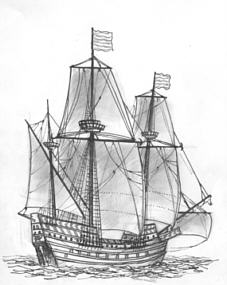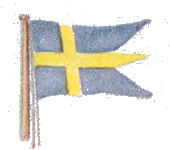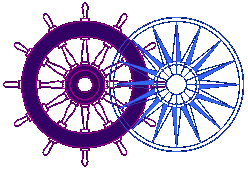|
The Nordic Seven-Year War lasted 1563-1570. It was a conflict between Sweden (king
Erik XIV) and Denmark (king Fredrik II), involving seven sea battles between 1563 and 1566.
Anno 1565 was a busy year for the navies of the Baltic Sea, with three major battles. The main adversaries were Denmark (in union with Norway and allied with Lübeck) and Sweden. The Swedish fleet had 46 or 50 ships, commanded by Claes Christerson Horn, on the 90 gun Sankt Erik. They departed from Dalarö, near Stockholm, in May and sailed south. The Swedes wanted to capture Bornholm Island (Danish), and the Danes wanted to win a decisive victory over the Swedes. No side would achieve its goals. The May battleOn May 21-22, the Swedes encountered four Danish ships off Rügen, commanded by Peder Hvitfeld. Rather than surrender, the Danes escaped on land, brought some of their guns ashore and burned their ships. The June battleOn June 4, the Swedes encountered an allied fleet, 18 Danish ships and 10 from Lübeck, commanded by admiral Herolf Trolle, on the Jægmesteren. Admiral Trolle was shot and fatally wounded, about 700 of his men were killed, wounded, or taken prisoner, and the Danish-Lübeck fleet decided to retreat. The July battle
At noon on July 7, the two navies met a second time in the south Baltic Sea, between Bornholm Island and Rügen. Admiral Rud took the initiative and sailed straight on to the Swedish admiral ship. The battle quickly became a mess, with several ships close to each other. After four hours of fierce fighting, there was no decisive victory on either side. Then, the Swedish ship Förgyllda Lejonet caught fire. The burning ship drifted towards the allied, who were forced to move away. The Danish admiral ship was now dangerously exposed to several Swedish ships, and suffered heavy casualties. Finally, at 10 PM, the Jægmesteren had only 100 or 150 men left standing of the original 1100 or 1200. The ship was leaking, and admiral Rud surrendered and was taken prisoner. That ended the battle and the remaining Danish-Lübeck ships escaped to Bornholm. During this second battle, the casualties (killed, wounded, prisoners) were about 7000 men on both sides. The Swedes had lost one ship captured and two sunk. The Danish-Lübeck fleet lost three ships captured and three sunk. This battle remains one of the largest ever in the Baltic Sea. Per Åkesson October 1999, rev 2002 Related text
Note: Sample from the archivesReading in archives often involves old books in old writing. If you're not used to reading the Fraktur font, you'll learn soon enough. Here's a passage from Geschichte der Stadt u. Herrschaft Rostock (J.G. Wetthen 1754):
If your computer has a Fraktur font installed, you'll get a rough impression. However, that font does not usually display the ſ, the long "Gothic S" (Unicode 017f hex or 383 decimal). Does anybody have a good solution? Reference & credits
|

 The
allied navy wanted revenge and prepared for a new battle. The admiral Otto Rud, on the Jægmesteren,
was appointed new supreme commander. His fleet counted 33 or 36 ships, of which 14 were allies from
Lübeck.
The
allied navy wanted revenge and prepared for a new battle. The admiral Otto Rud, on the Jægmesteren,
was appointed new supreme commander. His fleet counted 33 or 36 ships, of which 14 were allies from
Lübeck.
 Back to Nordic Underwater Archaeology
Back to Nordic Underwater Archaeology